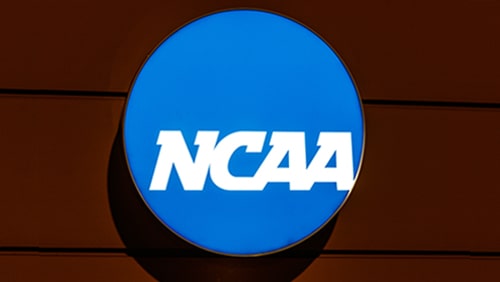Several college football conferences, as well as a handful of individual schools, have already decided that fall sports don’t need to be considered this year. The Middle Atlantic Conference and the Big 10, among others, are canceling their programs, while others, such as the ACC and the SEC, still plan on pushing forward. Because of all the changes and how they impact players and games, the NCAA has been scrambling to address issues as they come up for consideration. The organization is hoping to make a few more adjustments, hoping to avoid any long-term fallout the ongoing coronavirus pandemic might have on future activity.
 The council leading NCAA’s Division I got together yesterday and determined that teams not playing this year should still lead exercise and training programs. They approved a 12-hour schedule for football teams, which includes continued strength and conditioning training, as well as five hours of on-field training with helmets, according to ESPN. Those five hours would be spent with athletes wearing helmets.
The council leading NCAA’s Division I got together yesterday and determined that teams not playing this year should still lead exercise and training programs. They approved a 12-hour schedule for football teams, which includes continued strength and conditioning training, as well as five hours of on-field training with helmets, according to ESPN. Those five hours would be spent with athletes wearing helmets.
In addition, athletes are going to be able to freeze their eligibility this fall, which means they won’t lose their statuses, even if they don’t play in any games. Any eligibility won’t be a factor in school transfers, as the current transfer rules are going to remain intact. A final decision on the rules will come when the Division I board of directors meets tomorrow afternoon.
The 12-hour rule is already in place, having been implemented on August 24. It will run until October 4, and the NCAA’s Football Oversight Committee (FOC) will revisit the situation in the coming weeks, making additional adjustments as required before submitting new proposals to the council when they meet again next month.
Some coaches had pushed for 20 hours, instead of 12, but the council believed this was too much. Currently, many sports programs believe they will be able to hold spring seasons, and the council members believed that 20 hours would be too much of an impact if they were to allow it. The five hours being authorized for on-field activities can be managed by the coaches, with practices designed to meet their needs. They could, for example, hold five, one-hour sessions, or break it up however they see fit; however, they’re not allowed to approve contact practices.
The limitations mean that there won’t be any 11-on-11 or even 7-on-7 practices this fall for football. Ultimately, this means that athletes who have spent years on the field will now possibly face an extended period of inactivity that will certainly be unwelcome. According to Shane Lyons, the athletic director at West Virginia University and the chair of the FOC, this may not be ideal, but it’s necessary. He explains, “You can go at a faster speed. You can run your offensive scheme, you can run your defensive scheme, but it’s not 11-on-11 and all that. Most of the schools will do what they did in the summer, they’ll go through schemes and plays and stuff, but a lot of it will be individual drill work with your [defensive backs], your offensive line, defensive line.”
Needless to say, the concept has seen mixed reactions among coaches in the NCAA, with some pointing out that it isn’t a fair compromise. Since some conferences have decided to push forward with their football programs, those players will continue to develop, while those involved in conferences with no football this year will fall behind. Unfortunately, with individual conferences able to decide their own fate and no central governing body, this is the outcome. It’s also one of the many reasons the coronavirus has served as a wake-up call, leading to a greater push for all conferences to be brought under the auspices of a single controlling entity.